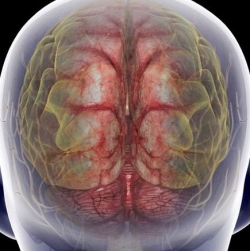
A new test that measures eye movement while watching television helps detect neurological disorders earlier including Parkinson’s disease, fetal alcohol spectrum disorder, autism and attention deficit hyperactivity disorder.
The low-cost test, developed at Queen’s University and the University of Southern California, provides new insight into how specific disorders affect attention.
“It’s key to get a diagnosis of autism as early as possible so that children get the appropriate therapy they need early. Diagnosing Parkinson’s early is also important so people at risk can start treatments or alterations in lifestyle that are deemed protective right away,” says Douglas Munoz (Biomedical and Molecular Science), a lead researcher on the study and principle investigator at the Queen’s Eye-Movement Laboratory.
Study participants watched television while the research team repeatedly changed the channel. Researchers recorded the participant’s eye movements and compared the data against control subjects to determine abnormal eye movement patterns indicative of brain abnormality.
The eye test is currently available at Hotel Dieu Hospital and can be used on children as young as six months old. Dr. Munoz hopes one day the test will be available in all clinics and doctor’s offices as part of regular examinations especially for young children and the elderly.
